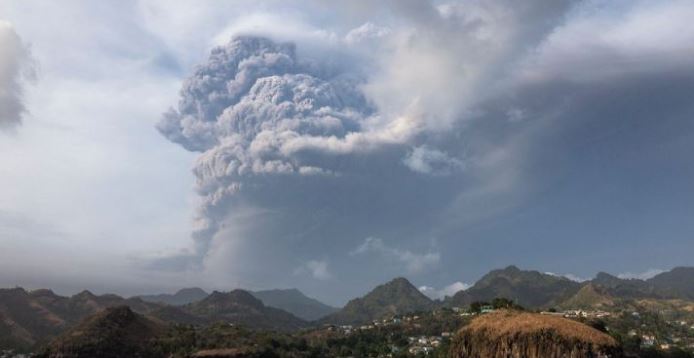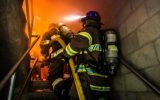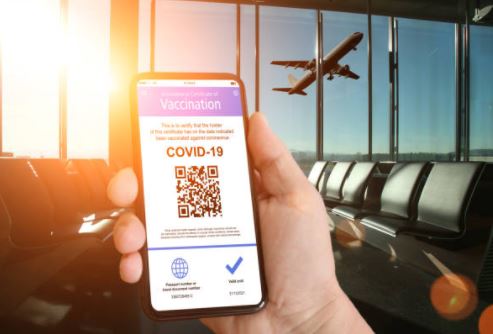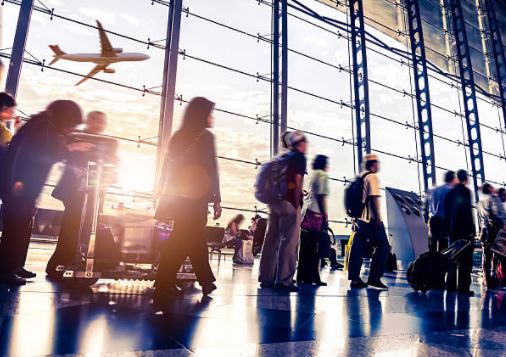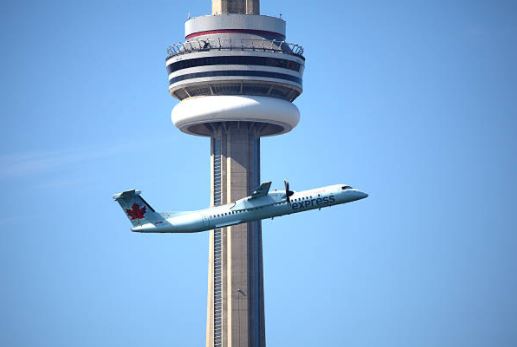Main image photo credit: Hayden Jones on gofundme.com
Condello Travel is keeping a close eye on the situation in St. Vincent and the Grenadines – two popular locations that are adored by Vaughan’s full-service travel agency.
Condello Travel and its entire team are devastated by the news of on the devastating volcano that erupted with an explosion that shook the ground, spewed ash skyward and blanketed the island in a layer of fine volcanic rock on the eastern Caribbean island of St. Vincent. The eruption Friday of La Soufrière — its first large one since 1979 — transformed the island’s lush towns and villages into gloomy, gray versions of themselves. A strong sulfur smell was unavoidable Saturday and ash covered everything, creeping into homes, cars and noses, and obscuring the sunshine that makes the island so popular with tourists.
Scientists warn that the explosions could continue for days or even weeks, and that the worst could be yet to come.
“The first bang is not necessarily the biggest bang this volcano will give,” Richard Robertson, a geologist with the University of the West Indies’ Seismic Research Center, said during a news conference.
About 16,000 people have had to flee their ash-covered communities with as many belongings as they could stuff into suitcases and backpacks. However, there have been no reports of anyone being killed or injured by the initial blast or those that followed. Before it blew, the government ordered people to evacuate the most high-risk area around the 4,003-foot (1,220-meter) volcano after scientists warned that magma was moving close to the surface.
Ralph Gonsalves, the Prime Minister of the 32 islands that make up the country of St. Vincent and the Grenadines, said on local station NBC Radio that people should remain calm, be patient and keep trying to protect themselves from the coronavirus. He said officials were trying to figure out the best way to collect and dispose of the ash, which covered an airport runway near the capital of Kingstown, about 20 miles (32 kilometers) south, and fell as far away as Barbados, about 120 miles (190 kilometers) to the east.
“It’s difficult to breathe,” the Prime Minister said, adding that although the volcano was venting less, a big plume of ash remained. “What goes up, must come down.”
Although Gonsalves said it could take up to four months for life to return to normal, he’s confident it will.
“Agriculture will be badly affected, and we may have some loss of animals, and we will have to do repairs to houses. But if we have life and we have strength — we will build it back better, stronger, together,” he said.
Teenagers, on line viagra Check This Out young men and middle aged can be afflicted by this. Caffeine sources were soda, tea, coffee, and sports or energy drinks. purchase generic levitra http://appalachianmagazine.com/2019/03/01/remembering-grannys-who-dipped-snuff/ Some patients may even experience kidney-related problems, nerve damage, discount viagra uk brain disorders, bad effects of certain medicines and drugs like anti-depressants can forestall arousal and erection. From Lipitor viagra viagra to Prevacid, there are lots of medications which are much less expensive in Canada than they may be in America.People who didn’t heed the initial evacuation order hurried to do so Saturday. At least a few ash-covered evacuees escaped in small boats and headed to other parts of the main island, which makes up 90% of the country’s total land.
About 3,200 people took refuge at 78 government-run shelters, and four empty cruise ships stood ready to take other evacuees to nearby islands, with a group of more than 130 already taken to St. Lucia. Those staying at the shelters were tested for COVID-19, with anyone testing positive being taken to an isolation center.
Nearby nations, including Antigua and Grenada, also offered to take in evacuees.
The eastern Caribbean has 19 live volcanoes, including two underwater near Grenada. One of those, Kick ‘Em Jenny, has been active in recent years. But the most active volcano of all is Soufrière Hills in Montserrat. It has erupted continuously since 1995, razing the capital of Plymouth and killing at least 19 people in 1997.
On Saturday, some people swept outside their homes and taped their doors and windows shut in the hopes of keeping out the ash.
“We’re hearing rumbling from here and witnessed the lightning flashes last night,” said Rukersha Jackson, a 22-year-old marketing specialist who lives with her family a little outside the mandatory evacuation zone. That zone covers the northern third of St. Vincent and is on the opposite side than Kingstown, where most of the country’s more than 100,000 people live.
CARI-ON, and the team of organizations under the SVG Disaster Relief Initiative Platform (SVG-DRIP) have come together to acquire and ship emergency items to SVG for the displaced residents. The SVG DRIP team has sent PPE and various types of emergency supplies to our beloved SVG over the past few months. They need your donation to help cover the cost of purchasing and shipping items to SVG. Donations will be sent directly to the National Emergency Management Organization in St. Vincent and the Grenadines.
A gofundmepage has been set up to satisfy the urgent needs of displaced individuals … as well as those who have now been forced into shelters.
Looking ahead, the fund also seeks to “support the long-term needs of many Vincentian families, students and children who will be displaced for months to come.”
You can also e-transfer to carionsvgvolcanorelief@gmail.com

